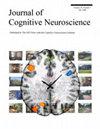Electroencephalographic Decoding of Conscious versus Unconscious Representations during Binocular Rivalry
IF 3
3区 医学
Q2 NEUROSCIENCES
引用次数: 0
Abstract
Theories of visual awareness often fall into two general categories, those assuming that awareness arises rapidly within visual cortex and those assuming that awareness arises more slowly as a result of interactions between visual cortex and frontoparietal regions. To test the plausibility of early theories of consciousness, we combined the temporal resolution of the EEG technique with multivariate pattern classification techniques to assess the latency at which decodable information about consciously perceived stimuli is enhanced relative to information about stimuli that are not consciously perceived. Competing red and green gratings were presented simultaneously to the two eyes, creating rivalry, and observers reported which one of the two colors was perceived on each trial. We then used the pattern of EEG over the scalp to decode the orientation of the grating that was perceived and the orientation of the grating that was suppressed by the rivalry and not perceived. This allowed us to determine when the content of the neural representations differed between the consciously perceived grating and the unconscious grating. Early theories predict that the difference between conscious and unconscious processing would occur within ∼200 msec of stimulus onset (e.g., at the time of the visual awareness negativity). We found that decoding accuracy was significantly greater for the consciously perceived orientation than for the unperceived orientation beginning 160 msec after stimulus onset, as predicted by theories that propose a rapid onset of visual awareness.双眼竞争中有意识与无意识表征的脑电图解码。
视觉意识理论通常分为两大类,一类假设意识在视觉皮层内迅速产生,另一类假设意识的产生较慢,这是视觉皮层和额顶叶区域相互作用的结果。为了验证早期意识理论的合理性,我们将脑电图技术的时间分辨率与多元模式分类技术相结合,以评估有关有意识感知刺激的可解码信息相对于有关非有意识感知刺激的信息增强的潜伏期。相互竞争的红色和绿色光栅同时呈现在两只眼睛面前,形成竞争,观察者报告在每次试验中看到的是两种颜色中的哪一种。然后我们用脑电图在头皮上的模式来解码被感知到的光栅的方向以及被竞争抑制而没有被感知到的光栅的方向。这使我们能够确定在有意识的光栅和无意识的光栅之间,神经表征的内容何时不同。早期的理论预测,有意识和无意识处理之间的差异将在刺激开始后的200毫秒内发生(例如,在视觉意识消极的时候)。我们发现,在刺激开始160毫秒后,有意识感知方向的解码准确率明显高于未感知方向的解码准确率,这与提出视觉意识快速开始的理论预测一致。
本文章由计算机程序翻译,如有差异,请以英文原文为准。
求助全文
约1分钟内获得全文
求助全文
来源期刊
CiteScore
5.30
自引率
3.10%
发文量
151
审稿时长
3-8 weeks
期刊介绍:
Journal of Cognitive Neuroscience investigates brain–behavior interaction and promotes lively interchange among the mind sciences.

 求助内容:
求助内容: 应助结果提醒方式:
应助结果提醒方式:


